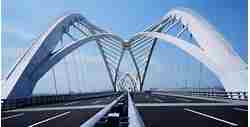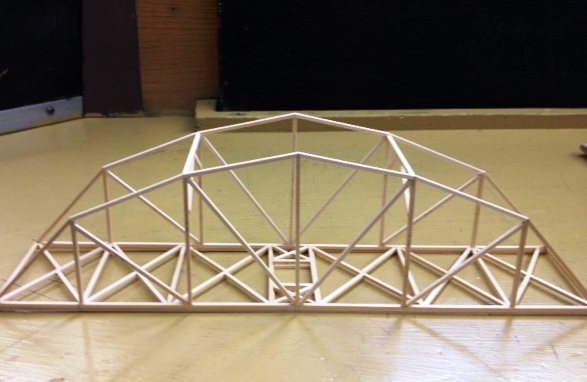Courses by Software
Courses by Semester
Courses by Domain
Tool-focused Courses
Machine learning
POPULAR COURSES
Success Stories
Project on Concrete Mix Design for various grades of Concrete
Aim : To calculate the concrete mix design for M35 grade concrete with fly ash. Introduction : * Concrete is a complex material and has the right mix of constituents of concrete,which if not done properly and will have adverse effect on the properties of concrete. * Concrete mix design is…
Venu Madhav
updated on 11 Jun 2021
Aim :
To calculate the concrete mix design for M35 grade concrete with fly ash.
Introduction :
* Concrete is a complex material and has the right mix of constituents of concrete,which if not done properly and will have adverse effect on the properties of concrete.
* Concrete mix design is a scientific and systamatic process of choosing economical relative proportion of various ingredients from available material.
* Which gives cohesive concrete of desired workability in fresh state.and desired strength and durability in harden stage.
* So it is a step by step procedure for selecting of W/C ratio .water content and estimation of coarse aggregate content,fine aggregate conctent done in a laboratory with actual material which is going t be used.
* The process of selecting suitable ingredients for producing concrete of required strength,durability and workability as econommical as possible is known as concrete mix design.
* The compressive strength of concrete depends on the quality and quantity of cement,water and aggregates.
* It is also depends on the mixing,batching,placing,compaction and curing.
* The objective of concrete mix design to achieve the predetermined minimum strength and durability in most economical manner.
* The cost of concrete depends upon mainly two factors that is cost of material and cost of labour.
* A good concrete mix should have the following important properties,
a) It should need the strength requirement of the structure.Which is measured in compressive strength.
b) It should be mix,transported and easily compacted.
c) It should be economical therefore good concrete which makes your house safer life and ultimately saves your money.
Types of concrete mix :
Nominal mix :
* Nominal mix is process in which prescribed ingredients are as per their standard specfications and their propertions are specfied in the ratio of cement to aggregate to attain the required strength.
* Mix propertions like 1:1.5:3,1:2:4,1:3:6 i.e., M20,M15,M10 are adopted in nominal mix of concrete.
* Nominal mix is preffered for smaller,unimportant and small concrete works.
* Nominal mix concrete may be used for concre of M20 or lower grades like M5,M7.5,M10,M15.
* M20 is defined as the concrete grade in which 'M' denotes mix design and number denotes the compressive strength of concrete cube after 25 days of curing in N/mm2.
Standard mix :
* The nominal mixs of fixed cement-aggregates ratio very widely in strength and results in over rich mixes.
* Minimum compressive strength has been included in many specifications and these are termed as standard mix.
* In IS:456-2000 concretemixes are designted into no of grades as M10,M15,M20,M25,M30,M35 and M40. Where 'M' denotes mix design and number denotes the compressive strength of concrete cube after 25 days of curing in N/mm2.
Designed mix :
* In design mix concrete proportions of the ingrediennts are properly determined with their relative ratio to achieve the concrete of desired strength.
* Not only the desired strength but also according to the properties of fresh concrete like workability,performance of concrete with the certain specifications are taken in the detail consideration.
* The production of concrete with appropriate propertions will be a most economical one.
* All the materials are tested before they used and entire process is found based on trail and error of various options.
* Nominal and standard mix can be used forconcrete with undemanding performance may be used only for very small jobs when the strength of concrete does not exceed 30N/mm2.
Requirements of concrete mix design :
These are the rqirements for the basis of selection and propertioning of mix ingredients.
* Minimum compressive strength required for structural considerations.
* Adequate workability.
* Minimum water-cement ratio to attain adequate durability.
* Maximum cement content to avoide shrinkage.
* Mix design is the most intellectual and rational approach for the selection of specfic materials with their propertion and more or less for their unique characteristics .
* Design mix contains weight batching and makes concreteof desired strength and also cost efficient.
Caliculation of mix design for M35 grade concrete With fly ash :
1) Stipulations for propertioning :
* Grade designation = M35
* Type of cement = OPC 43 grade confirming to IS8112
* Maximum nominal size of aggregate =20mm
* Maximum cement content 360 Kg/m3 ( from table 5 IS 456:2000 exposure condition )
* Minimum water cement ratio =0.4 ( from table 5 IS 456:2000 exposure condition )
* Workability = 75mm (slump value for pumpble concrete )
* Exposure condition = Extreme ( for rein forced concrete )
* Method of concrete placing= pumping
* Degree of super vision = good
* Type of aggregate = crushed angular aggregate
* Minimum cement content = 450Kg/m3
* Chemical admixture type = Superplasticizer.
2) Test data for materials :
* Cement used = OPC 43 grade confirming to IS 8112
* Specfic gravity of cement =3.15
* Fly ash = confirming to IS 3812 part-1
* Specfic gravity of fly ash =2.2
* Chemical admixture superplasticizer confirming to IS 9103
* Specfic gravity of coarse aggregate and fine aggregate = 2.74
* Water absorption coarse aggregate = 0.5%
* Water absorption fine aggregate = 1.0%
* Free surface moisture of coarse aggregate and fine aggregate = Nil
* Sieve analysis of coarse aggregate and fine aggregate =Confirming to grading zone -1 of table 4 IS 383
3) Target strength for mix proper tioning :
* From table 1 of IS 10262-2009 Standard deviation for M35 grade concrete (S)= 5 N/mm2
F'ck = fck + (1.65*S)
= 35 + (1.65*5)
=43.25N/mm2
4) Selection of water cement ratio :
* From table 5 of IS 456:2000 for extreme exposure minimum water cement ratio =0.4
* Based on experience adopted water-cement ratio =0.35
0.35 < 0.4 Hence ok.
5) Selection of water content :
* From table 2 of IS 10262-2009 maximum water content for 20mm aggregate is 186lit (for 25mm to 50mm slump )
* Estimated water content for 75 mm slump = 186+(0.03*186)= 191.58lit
* As per super plasticizer is used the water content can be reduced upto 30% based on trialwater content reduction of 28% is achieved with plasticizers
* Hence the arrived water content = 191.58*0.72=138lit
6) Caliculation of cement content :
Water-cement ratio =0.35
W/C =0.35 then C=(W/0.35)
Cementitious material (cement+fly ash) content =(138/0.35)=394 Kg/m3
* From table 5 IS:456-2000 minimum cement for extreme exposure condition =360kg/m3
394Kg/m3 > 360Kg/m3 hence OK.
* Now the propertion of mix containing fly ash the following steps are suggested.
a) The percentage of fly ash needs to be decided based on project requirement and quality of materials.
b) In some cases increase in cementitious material can be warrented increase in cementitious material content and it's percentage may be experienced and trial.( This example is with increse of 10% cementitious material content )
* Cementitiouc material content = 394*1.10= 433Kg/m3
* So water cement ratio = 138/433=0.32
* Fly ash @30% total cementitious material content = 433 *30%=130Kg/m3
* Cement content = 433-130= 303Kg/m3.
* Fly ash being utilized = 130Kg/m3.
7) Proportion of coarse aggregate and fine aggregate content :
* From table 3 of IS 10262-2009 volume of coarse aggregate corrosponding 20mm size aggregate and fine aggregate zone 1 for water cement ratio 0.6
* In the present case W/C ratio is 0.35
* Therefore the volume of coarse aggregate needs to be increased to decreae the fine aggregate content.
* As W/C ratio is lower 0.15 the proportion of volume of coarse aggregate is increased by
0.05=0.01
0.15= x
There fore x = 0.03
Then corrected volume of coarse aggregate for the water-cement ratio of 0.35=0.63
* For pumpable concrete these values are reduced by 10%
* Therefore volume coarse aggregates = 0.63 *0.9=0.57
* volume of fine aggregate = 1-0.57=0.43
Mix caliculations :
a) Volume of concrete = 1m3
b) Volume of cement = (mass of cement /specific gravity of cement)*(1/1000)
= (303/3.15)*(1/1000)=0.096m3
c) Volume of fly ash = (mass of fly ash/specific gravity of fly ash)*(1/1000)
= ( 130/2.2)*(1/1000)=0.059m3
d) Volume of water = (mass of water /specific gravity of water)*(1/1000)
= (138/1)*(1/1000)=0.138m3
e) Volume of chemical admixture = (mass of chemical admixture /specific gravity of chemical admixture)*(1/1000)
= (7.6/1.145) * (1/1000)=0.006m3
f) Volume of aggregate ( CA & FA )= [a-(b+c+d+e)]
= [1-(0.096+0.059+0.138+0.006)]
= 0.701m3
g) Mass of coarse aggregate (CA)= f*volume of coarse aggregate*specfic gravity of coarse aggregate*1000
= 0.701*0.57*2.74*1000=1095Kg/m3
h) Mass of fine aggregate (FA)= f*volume of fine aggregate*specfic gravity of fine aggregate*1000
= 0.701*0.43*2.74*1000=826Kg/m3.
Mix propertion for trail is
* Cement = 303Kg/m3.
* Fly ash = 130Kg/m3.
* Water = 138Kg/m3.
* Fine aggregate = 826Kg/m3.
* Coarse aggregate = 1095Kg/m3.
* Chemical admixture= 7.6Kg/m3.
* Water-cement ratio = 0.32
* Total mix ratio = (303+130):826:1095= 1:1.9:2.53
Aim : To caliculate the mix design for M50 grade concrete without fly ash .
1) Stipulations for propertioning :
* Grade designation = M50
* Type of cement = OPC 43 grade confirming to IS8112
* Maximum nominal size of aggregate =20mm
* Maximum cement content 320 Kg/m3 ( from table 5 IS 456:2000 exposure condition )
* Minimum water cement ratio =0.45 ( from table 5 IS 456:2000 exposure condition )
* Workability = 100mm (slump value for pumpble concrete )
* Exposure condition = severe ( for rein forced concrete )
* Method of concrete placing= pumping
* Degree of super vision = good
* Type of aggregate = crushed angular aggregate
* Minimum cement content = 450Kg/m3
* Chemical admixture type = Superplasticizer.
2) Test data for materials :
* Cement used = OPC 43 grade confirming to IS 8112
* Specfic gravity of cement =3.15
* Chemical admixture superplasticizer confirming to IS 9103
* Specfic gravity of coarse aggregate and fine aggregate = 2.74
* Water absorption coarse aggregate = 0.5%
* Water absorption fine aggregate = 1.0%
* Free surface moisture of coarse aggregate and fine aggregate = Nil
* Sieve analysis of coarse aggregate and fine aggregate =Confirming to grading zone -1 of table 4 IS 383
3) Target strength for mix proper tioning :
* From table 1 of IS 10262-2009 Standard deviation for M50 grade concrete (S)= 5 N/mm2
F'ck = fck + (1.65*S)
= 50 + (1.65*5)
=58.25N/mm2
4) Selection of water cement ratio :
* From table 5 of IS 456:2000 for severe exposure minimum water cement ratio =0.45
* Based on experience adopted water-cement ratio =0.31
0.31 < 0.45 Hence ok.
5) Selection of water content :
* From table 2 of IS 10262-2009 maximum water content for 20mm aggregate is 186lit (for 25mm to 50mm slump )
* Estimated water content for 100 mm slump = 186+(0.06*186)= 197lit
* As per super plasticizer is used the water content can be reduced upto 30% based on trialwater content reduction of 29% is achieved with plasticizers
* Hence the arrived water content = 197*0.71=140
6) Caliculation of cement content :
Water-cement ratio =0.31
W/C =0.31 then C=(W/0.31)
Cementitious material (cement+fly ash) content =(140/0.31)=452Kg/m3
* From table 5 IS:456-2000 minimum cement for severe exposure condition =320kg/m3
452Kg/m3 > 320Kg/m3 hence OK.
7) Proportion of coarse aggregate and fine aggregate content :
* From table 3 of IS 10262-2009 volume of coarse aggregate corrosponding 20mm size aggregate and fine aggregate zone 1 for water cement ratio 0.6
* In the present case W/C ratio is 0.31
* Therefore the volume of coarse aggregate needs to be increased to decreae the fine aggregate content.
* As W/C ratio is lower 0.19 the proportion of volume of coarse aggregate is increased by
0.05=0.01
0.19= x
There fore x = 0.038
Then corrected volume of coarse aggregate for the water-cement ratio of 0.31=0.638
* For pumpable concrete these values are reduced by 10%
* Therefore volume coarse aggregates = 0.638*0.9=0.574
* volume of fine aggregate = 1-0.574=0.436
Mix caliculations :
a) Volume of concrete = 1m3
b) Volume of cement = (mass of cement /specific gravity of cement)*(1/1000)
= (452/3.15)*(1/1000)=0.143m3
c) Volume of water = (mass of water /specific gravity of water)*(1/1000)
= (140/1)*(1/1000)=0.140m3
d) Volume of chemical admixture = (mass of chemical admixture /specific gravity of chemical admixture)*(1/1000)
= (7.6/1.145) * (1/1000)=0.006m3
e) Volume of aggregate ( CA & FA )= [a-(b+c+d)]
= [1-(0.143+0.140+0.006)]
= 0.711m3
f) Mass of coarse aggregate (CA)= e*volume of coarse aggregate*specfic gravity of coarse aggregate*1000
= 0.711*0.574*2.74*1000=1118Kg/m3
g) Mass of fine aggregate (FA)= e*volume of fine aggregate*specfic gravity of fine aggregate*1000
= 0.711*0.436*2.74*1000=849Kg/m3.
Mix propertion for trail is
* Cement = 452Kg/m3.
* Water = 140Kg/m3.
* Fine aggregate = 849Kg/m3.
* Coarse aggregate = 1118Kg/m3.
* Chemical admixture= 7.6Kg/m3.
* Water-cement ratio = 0.31
* Total mix ratio = 452:849:1118= 1: 1.88: 2.47
Leave a comment
Thanks for choosing to leave a comment. Please keep in mind that all the comments are moderated as per our comment policy, and your email will not be published for privacy reasons. Please leave a personal & meaningful conversation.
Other comments...
Be the first to add a comment
Read more Projects by Venu Madhav (7)
Creation of Column Schedule and Drawing Template using AutoCad
1) Aim : To create a column Schedule as shown in figure. Procedure : Open AutoCAD * In startup settings start from scratch select engineering(inches) * Type un in command box and press enter. Change units type to engineering and precesion to 0.00 and insertion scale to inches. * First open annotate in ribbon…
30 Jul 2021 03:10 AM IST
Creating a Residence Layout, Seating plan, Toilet and Utility room plan using AutoCad
1) Aim : To draw the layout of a residence plan as shown in figure 1. Introduction : The drawing consists of a plan showing from the top view along with the showing all the inner elements of house . Procedure : Open autoCAD Instartup settings start from scratch select engineering…
24 Jul 2021 06:44 AM IST
Drafting of various geometries using Chamfer, Fillet tool in AutoCad
1) Aim : To draw 1st diagram using chamfere,fillet tool in autocad. Introduction : The drawing consists of a plan showing front view and the command which i have used to dra this diagram are line,circle,dim,offset . Procedure : Open AutoCAD In startup settings start from scratch select metric (meter).type un in command…
22 Jul 2021 11:46 AM IST
Creating a Floor plan, Footing detail and Isometric view using AutoCad
1) Aim : To draw cross section of Load bearing wall over spread footing Intoduction : Commands i have used to draw the diagram are line, offset, dimension Prodecure : * First i have taken origin coordinate (1,1) using line command. * Then i have drawn horizontal…
09 Jul 2021 11:37 AM IST
Related Courses






0 Hours of Content

Skill-Lync offers industry relevant advanced engineering courses for engineering students by partnering with industry experts.
Our Company
4th Floor, BLOCK-B, Velachery - Tambaram Main Rd, Ram Nagar South, Madipakkam, Chennai, Tamil Nadu 600042.
Top Individual Courses
Top PG Programs
Skill-Lync Plus
Trending Blogs
© 2025 Skill-Lync Inc. All Rights Reserved.








